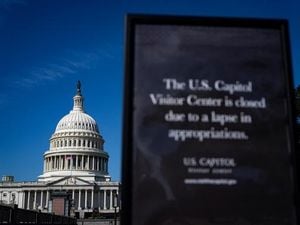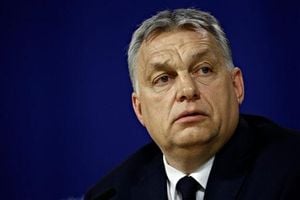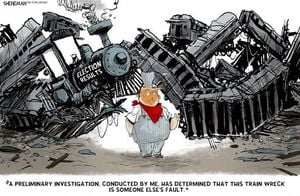In a sweeping move that has sent ripples through Washington, the Pentagon has implemented a new policy requiring nearly all Defense Department personnel to coordinate any and all communications with Congress through a central legislative affairs office. The directive, laid out in a memo dated October 15, 2025, and obtained by Breaking Defense, marks a significant shift in how the sprawling defense bureaucracy interacts with lawmakers—a change that has drawn sharp reactions from both Capitol Hill and those within the Department of Defense (DoD).
Defense Secretary Pete Hegseth and Deputy Defense Secretary Steve Feinberg co-signed the memo, which instructs that, with the sole exception of the Pentagon’s inspector general office, every engagement or piece of correspondence with Congress or state elected officials must now be routed through the office of the assistant secretary of defense for legislative affairs. This includes not just formal reports and legislative correspondence but also requests for information, technical assistance, and even casual engagements. The policy applies to senior department leaders, the chairman of the Joint Chiefs of Staff, combatant command heads, service secretaries and chiefs, directors of Defense Department agencies, and congressional affairs officials, among others.
“The Department of War (DoW) relies on a collaborative and close partnership with Congress to achieve our legislative goals. This requires coordination and alignment of Department messaging when engaging with Congress to ensure consistency and support for the Department’s priorities to re-establish deterrence, rebuild our military, and revive the warrior ethos,” Hegseth and Feinberg wrote, using the Trump administration’s preferred moniker for the Pentagon. “Unauthorized engagements with Congress by DoW personnel acting in their official capacity, no matter how well-intentioned, may undermine Department-wide priorities critical to achieving our legislative objectives.”
The memo, reported by Breaking Defense on October 21, 2025, represents a marked departure from previous practice. Until now, military services, combatant commands, and other DoD agencies typically managed their own congressional outreach, often through their own legislative affairs teams. Senior leaders within each organization would determine the level and nature of engagement with Capitol Hill, allowing for more direct, and sometimes rapid, communication between the military and lawmakers. The new directive centralizes—and, critics argue, potentially bottlenecks—these interactions within a single office.
Not surprisingly, the move has drawn immediate pushback from members of Congress. Representative George Whitesides, a California Democrat and member of the House Armed Services Committee, told Breaking Defense, “Congress decides who Congress will talk to, and the continued efforts of the secretary to wall off the department is not consistent with past tradition, and I frankly don’t think it’ll fly with the members or leaders of the committee.”
Concerns go beyond the matter of tradition. A congressional aide, speaking to Breaking Defense, warned that the new policy “could potentially backfire” on the Pentagon. The aide pointed out that during the drafting of the annual National Defense Authorization Act and appropriations bills, congressional staff often need information from the Pentagon, military services, or combatant commands within minutes. If all such requests must now be funneled through the central legislative affairs office, there’s a real risk that information won’t arrive in time to shape crucial legislation—potentially resulting in provisions that could negatively affect the military.
The Pentagon has not yet responded to requests for comment about the policy change. However, the memo attempts to preempt some criticism by noting that the authorities of the Pentagon’s comptroller and general counsel remain unchanged. The comptroller’s budget and appropriations affairs office will continue to serve as the principal legislative liaison for appropriations committees and the Congressional Budget Office. Moreover, the memo makes clear that servicemembers and department employees still retain whistleblower protections and other rights granted by law to communicate with Congress.
But the shift comes at a time when transparency and access at the Pentagon are already under scrutiny. According to Breaking Defense, last week saw a mass exodus of journalists from the Pentagon press pool after the department issued a 21-page pledge restricting reporters from soliciting information from government employees without explicit permission. Now, only a fraction of reporters remain, most representing smaller outlets or foreign publications. The clampdown on press access, combined with the new restrictions on congressional communication, signals a broader tightening of information flow under Hegseth’s leadership.
In addition to the communication directive, Hegseth and Feinberg have ordered a comprehensive review of the department’s congressional engagement processes. The assistant secretary of legislative affairs is tasked with delivering a report within 90 days of October 15, 2025, identifying “current issues, inefficiencies or misalignments in congressional engagement processes” and proposing ways to “streamline activities” and “enhance compliance.” The legislative affairs office has also been authorized to form working groups across the department to support this review. Meanwhile, Pentagon component heads have just 30 days from the issuance of the memo to provide detailed contact information for legislative affairs staff, organizational charts, and information on any tools used to track congressional engagements.
The timing of these changes is particularly notable given the broader context of U.S. defense and foreign policy. Over the past year, the Pentagon has been at the center of a heated debate in Congress over the executive branch’s use of military force—especially following a series of strikes against alleged drug-smuggling vessels in the Caribbean Sea, authorized by President Donald Trump and Secretary Hegseth. These operations, which have resulted in dozens of deaths and heightened tensions with Venezuela, have already raised questions among lawmakers about the limits of presidential war powers and the adequacy of congressional oversight.
Senators and human rights groups have expressed concern that the administration’s actions, including the designation of Latin American crime organizations as foreign terrorist organizations and the deployment of significant naval forces off the coast of Venezuela, may represent an overreach of executive authority. The lack of transparency and the Pentagon’s reluctance to share timely information with Congress have only fueled these anxieties. As Rep. Adam Smith, the ranking Democrat on the House Armed Services Committee, recently remarked, “I have also never seen such a staggering lack of transparency on behalf of an Administration and the Department to meaningfully inform Congress on the use of lethal military force.”
With the new memo in effect, lawmakers and Pentagon watchers alike are left wondering whether the centralization of congressional communications will improve coordination and message discipline—or whether it will further erode trust and slow the flow of crucial information at a time when national security stakes are high. The coming months, especially as the review of congressional engagement processes unfolds, will likely reveal whether this policy marks a necessary step toward greater efficiency or a troubling retreat from transparency.
For now, the Pentagon’s walls—both literal and figurative—seem a bit higher, and the corridors of power a little less open to the outside world.




